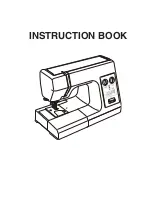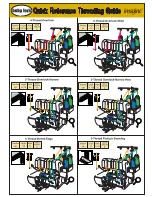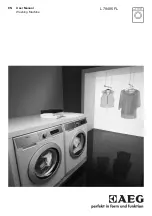
6
OPERATOR PREPARATION
Before Starting the Machine
Read the Owner’s Manual and the Engine Operation Manual.
Your machine is shipped ready for operation; however there is no fuel in the tank. When having the tank filled, you
must make sure the tank is never over-filled.
•The best way to do this is to tell the filling station to weigh the tank full. On an aluminum tank, it should
weigh no more than
36 pounds
and on a steel tank no more than
43 pounds
. (See more information at “Tank
Storage and Maintenance” page.)
Adjust the handle for comfortable operation. Remove detent pins from handle and adjust to the hole alignment that
gives the most comfortable height. Replace detent pins. Tighten nuts and bolts if needed.
Check Oil Level
: Starting the engine without the proper amount of oil will cause severe engine damage. Always keep
the engine oil level between the full and add marks on the dipstick. Do not loosen oil fill cap or remove dipstick while
engine is running.
•Park your machine on a level surface.
•Turn the oil fill cap counter clockwise and then lift from the fill tube.
•Wipe the dip stick clean and push it back into the oil fill tube until the cap seats and then withdraw it to
check: the oil level. (Do not screw cap on to check oil). Add if necessary. If the oil level is low, add API Class
SM oil having a SAE viscosity grade appropriate for the expected temperatures as indicated in the Operators
Manual (Usually a HD30 or 10W30).
•Important Note:
Do Not Overfill
•Replace oil cap.
Inspect fuel hoses and fittings for wear and leaks. Have all worn hoses and leaks repaired before operating.
Look and listen for exhaust leaks. Have all leaks repaired before operating.
Check the carburetor filter and air filter for debris. Clean and replace if necessary.
Connect fuel hose to tank by screwing the hose fitting to tank. You must tighten all the way down to make fuel
connection. Turn tank knob slowly until you hear the flow of fuel into fuel system.







































